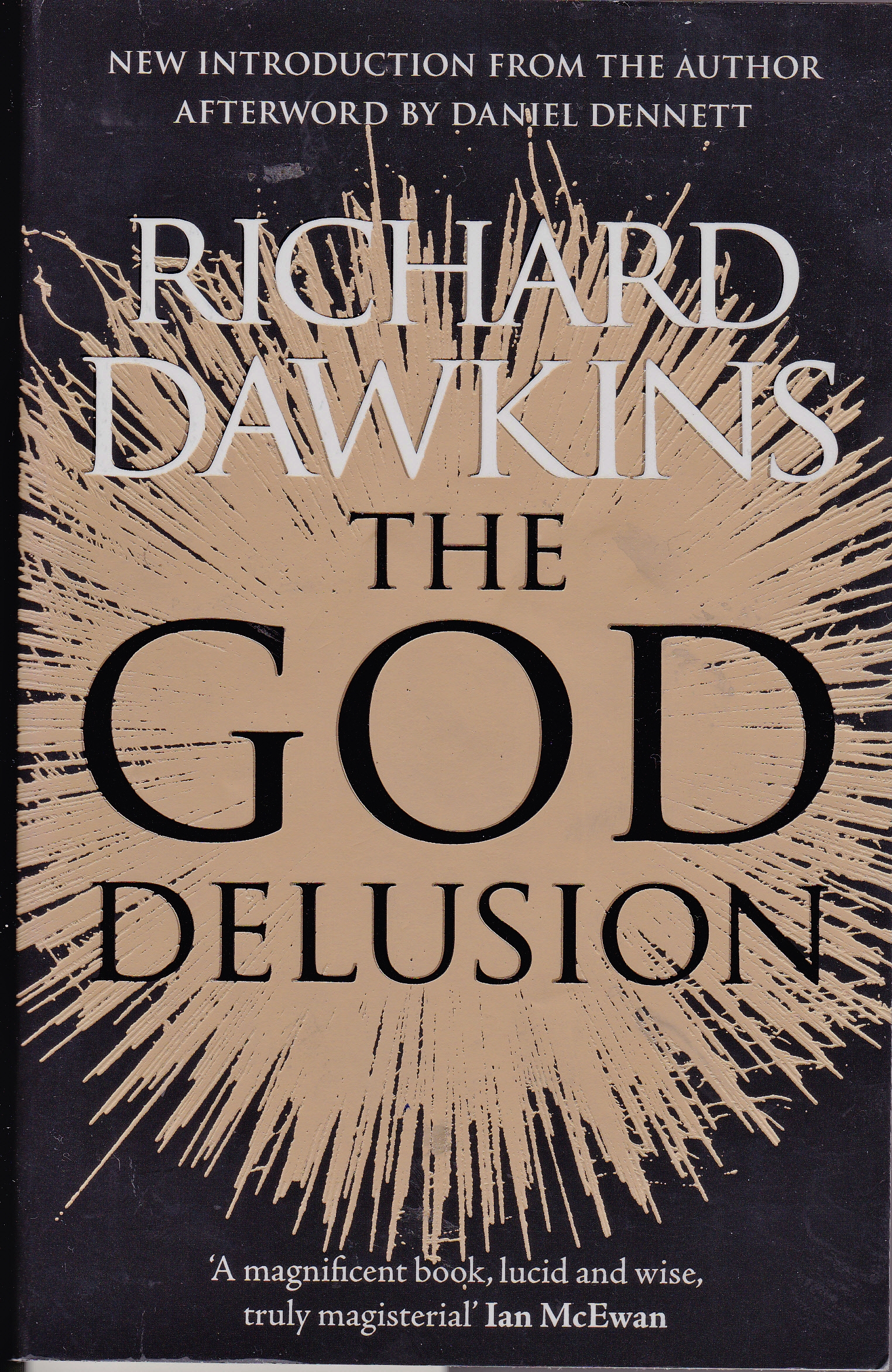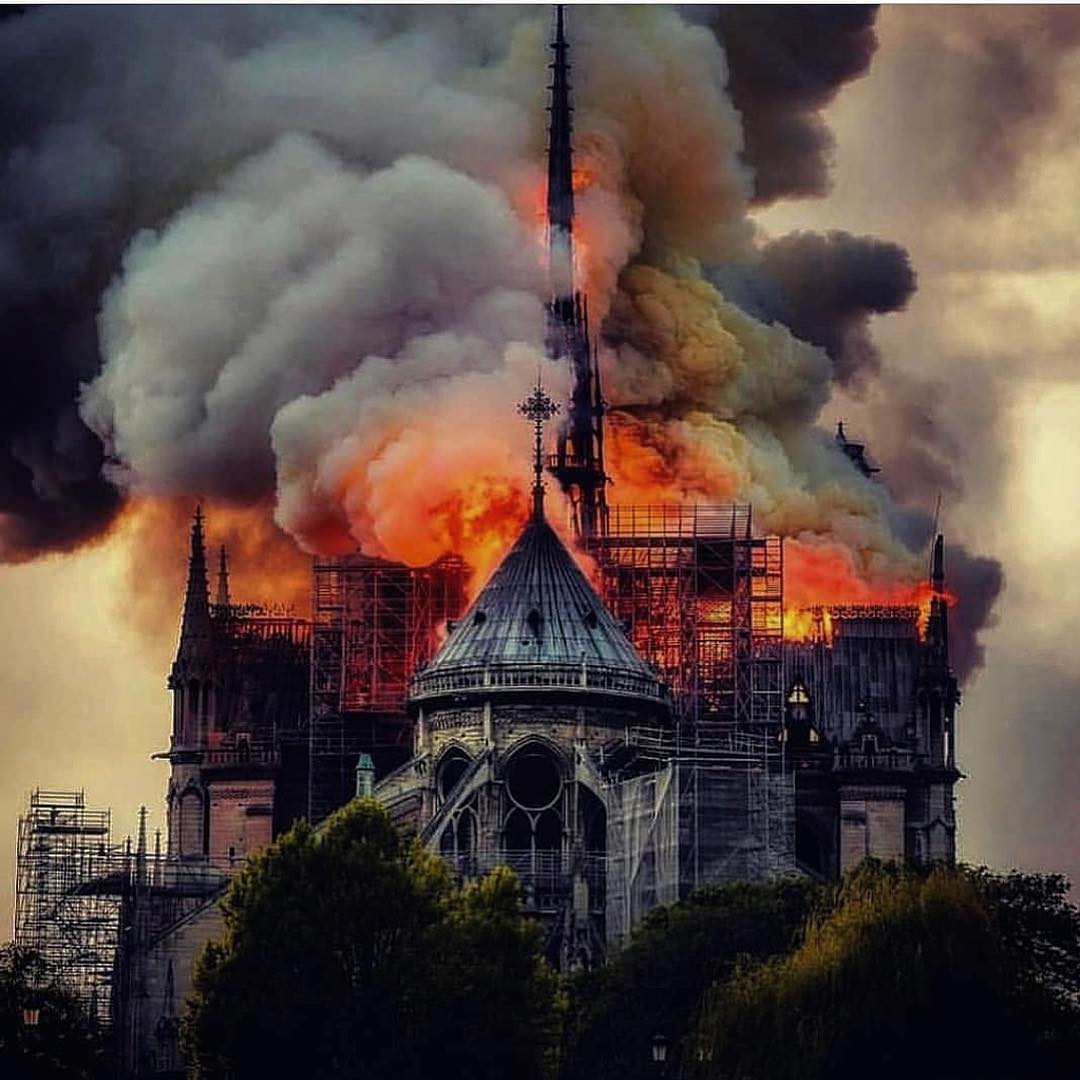The God Delusion is a great read; funny and witty in places and deadly serious in others. The author, Richard Dawkins is a professor and a scholar of renown and of course the brilliant writer of several significant books.

**********
The God Delusion is divided into chapters with the several headings within each chapter making the book easy to read. Dawkins is an atheist who has written, and lectured on, a great deal about the harm religion does to children, by religious indoctrination, which he believes is a form of child abuse. This book was right up my alley, so to speak. Christianity, just as much as Islam, teaches that unquestioned faith is a virtue.
Religion, whether either one or other of the three Abrahamic religions, Judaism, Christianity or Islam, is full of contradictions…no wonder children are confused. And it’s not just Muslims who are inspired to become martyrs. I can remember as a child revering those Christian martyrs whose stories we heard every day from the pulpit or in catechism classes. These three monotheistic religions have engaged in extreme violence against their respective ‘infidels’ and apostates. One only has to read the Qur’an to know that Islam is not a religion of peace. Dawkins quotes Ralph Waldo Emerson “ …the religion of one age is the literary entertainment of the next”…Except, writes Dawkins, ‘we are not allowed to laugh at Islam, under threat of fatwas!’ And anyway, Dawkins comforts his fellow atheists by promising us that monotheism is doomed to subtract one more god and become atheism. It cannot come soon enough for me and the millions of other atheists around the world.
Another thing about monotheistic religions that has no place in 21st century in my view, is that they enjoy tax-free status and as Dawkins states: ‘… far better to abandon tax-free status for religions altogether… because it helps to promote them while allowing them to avoid the rigorous vetting imposed on secular charities.’ Dawkins has researched the huge amounts of money amassed by TV evangelists in USA unscrupulously ‘stolen’ from believers. And believe me, the amounts of tax-free ‘donations’ these religious thieves steal from the true believers are the only ‘awe’ inspiring thing about the capitalist religion of televangelists.
I was especially interested in the chapter in which the author, who is a biologist and supporter of the Darwinian theory of evolution, discusses his views on religion as a ‘by-product’ of something else. Once again evolution of the human species comes into play and indeed does make sense to me. A theory that posits a selective advantage to children’s brains that possess a ‘rule of thumb’ in order to keep children safe and so preserve human life; e.g. the experience of previous generations. Obey your parents, obey your tribal elders, ‘especially when they adopt a solemn minatory tone.’ This makes perfect sense to me having been indoctrinated since infancy into Catholicism which ensures children do not question anything they are told, and never learn to think for themselves. It has perhaps allowed so many children to be sexually abused by clergy with impunity, for centuries. Believe, and obey without question!
I love Dawkins’ description: ‘The god of the Old Testament is arguably the most unpleasant in all fiction: Jealous and proud of it, a petty, unjust, unforgiving control freak. A vindictive, blood thirsty, ethnic cleanser. A misogynistic, homophobic, racist, infanticidal, genocidal, filicidal, pestilential, megalomaniacal, sadomasochistic, capriciously malevolent bully!’ What chance do children have when they are inculcated from infancy, to believe in, and fear, this vile father figure of a god?
Many scholars, including the author, are of the view that it’s the very moderate inculcation of religious teachings that inspire suicide bombers, and Dawkins discusses this at length. He also enlightens the reader on the many arguments that arise between creationists and atheists, and this was intriguing and at times gobsmacking that creationists actually believe such pie in the sky fairy tales in the face of proven and widely accepted scientific research and findings.
Scientists posit that we humans have evolved and so are products of natural selection; so ‘we should ask what pressure or pressures exerted by natural selection originally favoured the impulse to religion’ and Dawkins gives us compelling answers. The roots of morality and why we are good is also a riveting chapter and I urge all those who believe that religion acts as humanity’s ‘moral compass’ to at least read this chapter. Morality was a factor in human existence long before religions came into being. Dawkins asks if our moral sense has a Darwinian origin, and he suggests that readers will find no surprises in this chapter if they are well read and open minded, which of course those indoctrinated with religious dogma throughout their childhoods very likely won’t be! In any case, writes Dawkins, his purpose in analysing scriptures is to demonstrate that most religious people who claim to derive their morals from scripture do not really do so in practice. But, he adds, ‘suicide bombers obviously do.’
As Dawkins states, the Bible and Qur’an are ‘plain weird…as you would expect of chaotically cobbled together anthologies of disjointed documents composed, revised, translated, distorted and improved by hundreds of different authors, writers, copyists, unknown to us and mostly unknown to each other, spanning several centuries.’ He also discusses at length the Old Testament stories taken from much older mythologies, which I found especially interesting.
One of the most ridiculous statements Dawkins elicited from an interview with a well-known televangelist, was that he blamed the disastrous flooding of New Orleans during Hurricane Katrina, on a lesbian who lived in the city at the time. And he recalls the statement by a certain Anglican bishop, ‘thank god Jesus spoke the Queen’s English.’ Historic Mecca, the cradle of Islam is being buried in an unprecedented onslaught by religious zealots, but as Dawkins avows, there isn’t an atheist in the world who would want to bulldoze Mecca or the Buddhas of Bamiyan,in the mountains of Afghanistan, for example.
And of course we all know that scriptures are blatantly misogynist and the author highlights relevant, horrific passages, full of rapes incest, sodomy, which would have been enough to add to my childhood nightmares if I’d read them at that time. For instance, in one chapter, two male angels (whatever they are) were sent to Sodom to warn Abraham’s nephew, Lot, to leave that city. Lot invited the angels into his house and when all the men of Sodom gathered around outside and demanded that Lot hand over the angels so they could sodomise them, Lot refused and instead offered his two daughters ‘which have not known men’ to do with whatever they wanted. However, he warned them to do nothing to the two men whom he was protecting under his roof! Eventually Lot’s wife is turned into a pillar of salt and Lot commits incest with his two daughters. Dawkins suggests here that parents do not use the bible to teach their children morality. It’s obvious that zealous protectors of the Bible and Qur’an cherry pick chapters pertaining to peace whenever it suits them, because neither of these books can support their claims that their religion is a religion of peace and morality. Nothing could be further from the truth. And the latest ludicrous claim by some Muslim women that Islam is not only a religion of peace, but also a ‘feminist’ one, is laughable! And how does it help to engender equality of the sexes, when the men of Jewish faith pray and thank god every day, for not making them a woman?
Dawkins provides the reader with clear and concise reasons why he believes moderation in faith fosters fanaticism, and I found his reasons for this perfectly feasible. He uses the phrase ‘moral zeitgeist’, spirit of change, or ‘enlightened consensus’, of which the opposite is the dark side of religious absolutism or extremism. His point is, and this is important in [the 21st century], that even mild or moderate religion helps to provide the climate of faith in which extremism naturally flourishes. It goes without saying of course, that indoctrination begins in early childhood because parents inflict their religious beliefs onto their children.
In his book, Dawkins quotes respected journalist, Muriel Gray, writing in the Glasgow Herald, 24 July 2005, with reference to the London bombings: Everyone is being blamed, from the obvious villainous duo of George W Bush and Tony Blair, to the inaction of Muslim ‘communities’. But it has never been clearer that there is only one place to lay the blame and it has ever been thus. The cause of all this misery, mayhem, violence, terror and ignorance, is of course religion itself, and it seems ludicrous to have to state such an obvious reality, the fact is that the government and the media are doing a pretty good job of pretending that it isn’t so.
Religious indoctrination and absolutism has, in my humble opinion, allowed children of all Abrahamic religions to be sexually abused by their own paedophile clerical minders and others of their own faith. Dawkins writes: ‘More generally, (and this applies to Christianity no less than to Islam), what is really pernicious is the practice of teaching children that faith itself is a virtue. Faith is an evil precisely because it requires no justification and brooks no argument. Teaching children that unquestioned faith is a virtue primes them, given certain other ingredients that are not too hard to come by, to grow up into potentially lethal weapons for future jihads or crusades. Faith can be very dangerous, and deliberately to implant it into the vulnerable mind of an innocent child is a grievous wrong. It is purely and simply a violation of childhood by religion.’
Dawkins quotes another scholar, Patrick Sookhdeo, director of the Institute for the Study of Islam and Christianity: The mantra, ‘Islam is peace’ is almost 1,400 years out of date. It was only for about 13 years that Islam was peace and nothing but peace…For today’s radical Muslims – just as for the mediaeval jurists who developed classical Islam, it would be truer to say ‘Islam is war’. One of the most radical Islamic groups in Britain, al-Ghurabaa, stated in the wake of the two London bombings, ‘Any Muslim that denies that terror is a part of Islam is kafir.’ A kafir is an unbeliever ( i.e. a non-Muslim), a term of gross insult…Could it be that the young men who committed suicide were neither on the fringes of Muslim society in Britain, nor following an eccentric or extremist interpretation of their faith, but rather that they came from the very core of the Muslim community and were motivated by a mainstream interpretation of Islam?
Food for thought: Is the reason Muslims murder and torture those who criticise or make fun of Islam and their prophet, because they know that if Islam endures the same scholarly scrutiny that Christianity and Judaism have in recent decades, that it will be revealed as the sham that it really is? I urge readers to place their Bible, Qur’an or Torah in their home library on shelves alongside other great classics of literary fiction.
The other night I watched an Australian TV news item showing a Muslim child, barely five years old, at a kindergarten, dressed in a black hijab and full length black dress….while the other children around her were dressed in pretty, colourful clothing, their pretty hair tied up in dainty ribbons and bows …how is this conducive to a small child feeling a part of the community she lives in? And why do Muslim women insist on wearing clothing that makes them stand out from the crowd and attract negative and sometimes abusive reaction from extremists of other religions? Surely religion is a private matter to be celebrated at home or in a church or mosque?
-Anne Frandi-Coory 20 June 2017
















